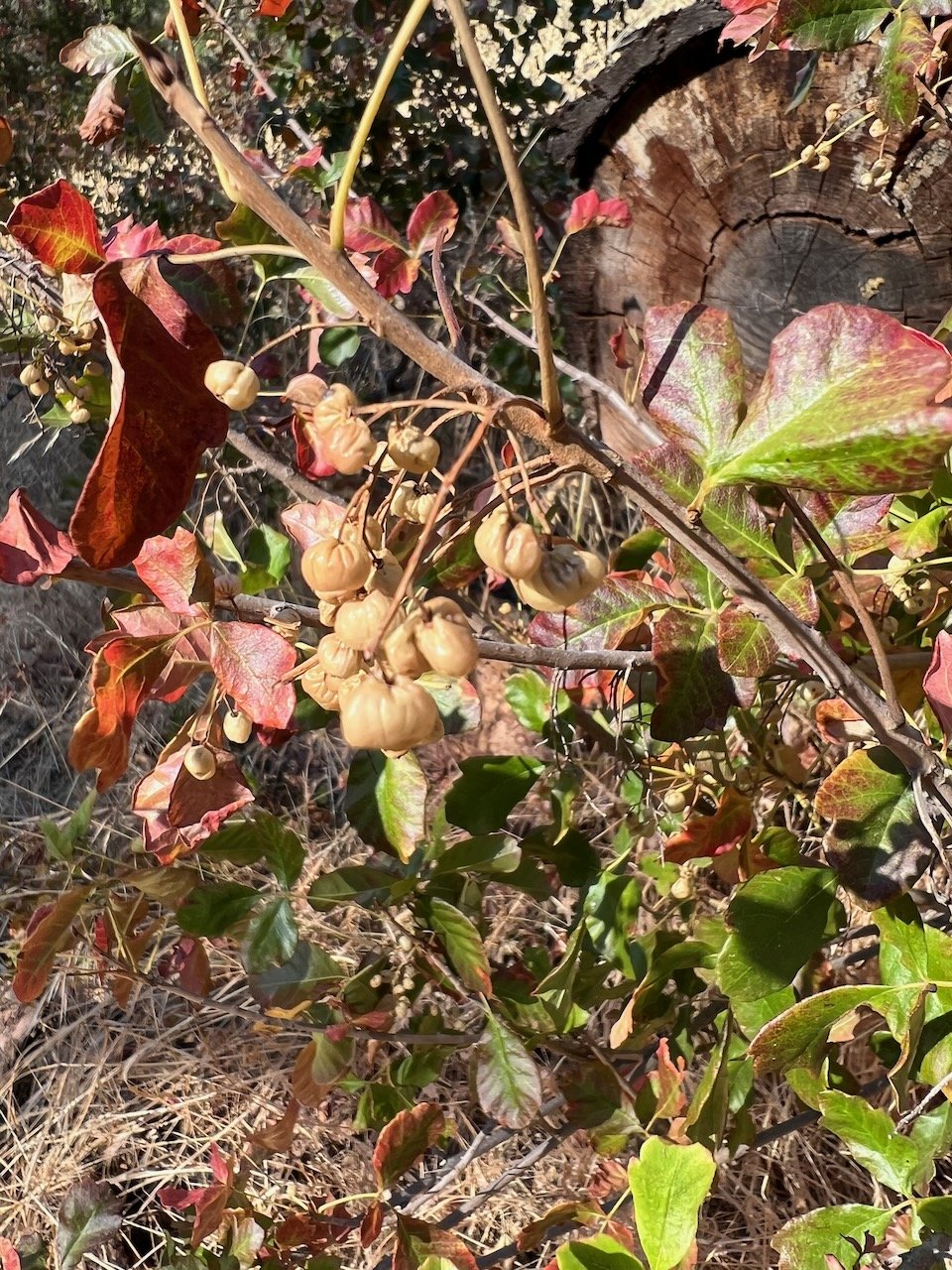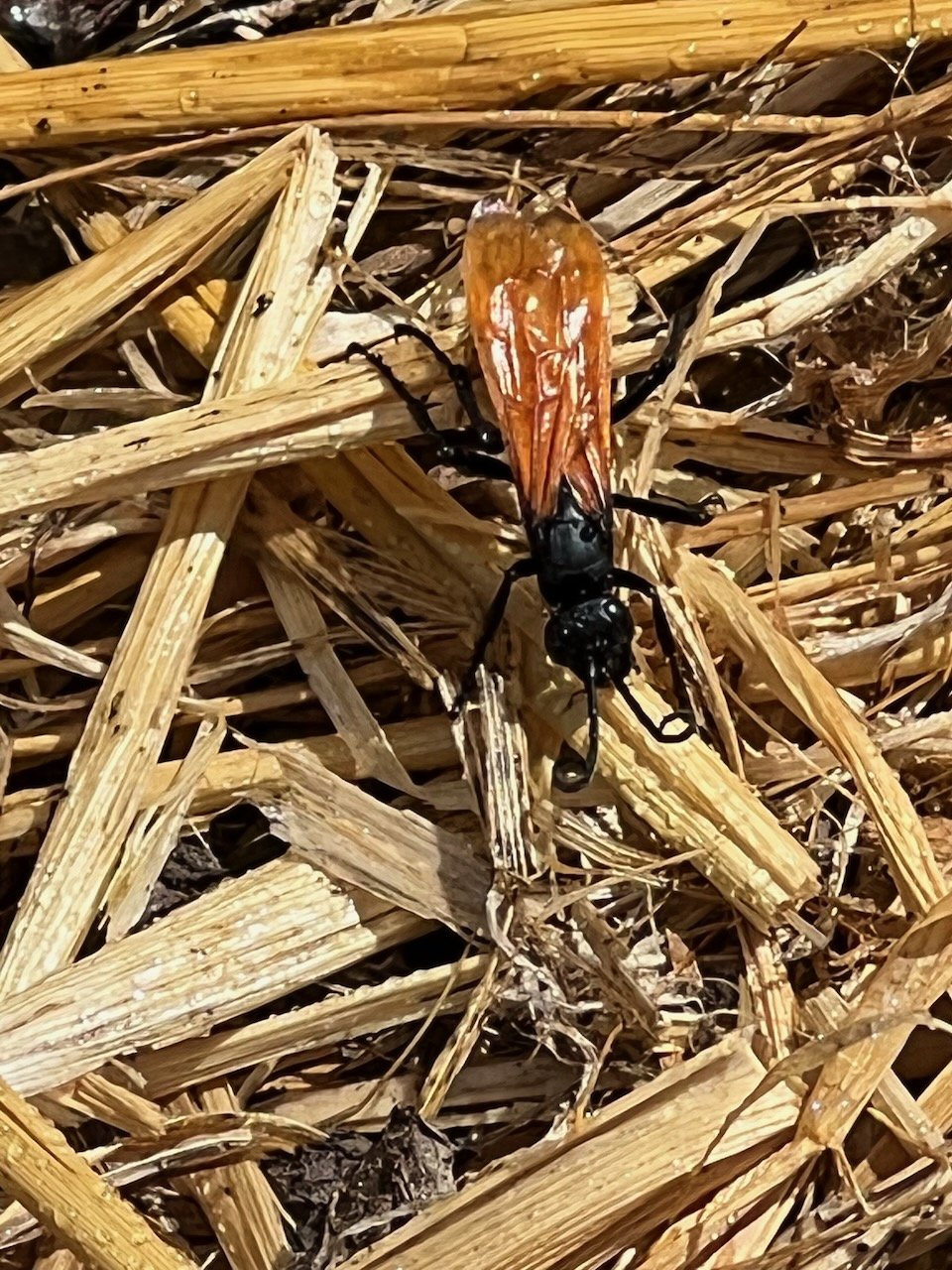You will not be surprised to hear that I learn as much from my students as they do from me.
Two weeks ago, my Edible Landscaping class had to take out all the summer crops from the veg beds at school, and plant up our fall and winter crops. The tomato plants were still pumping out fruit, despite their blighted leaves, and so a conversation ensued about what to do with them. I mentioned my old trick of picking them green, putting them under a tea towel, and letting them ripen. Several students talked about good recipes for green tomatoes. Then, another student mentioned that she always cuts the vine at the base, then hangs the tomato plants (vine and all) upside down outside, and the tomatoes ripen beautifully.
The class went for that idea, and when I suggested that they be hung indoors, I was promptly overruled. The vines got hung up on the fence that surrounds our garden.
At first, not much happened. The vines started to die and looked awful, while the green fruit just hung there. But as you can see, slowly, the tomatoes started to ripen. And then suddenly all at once, the rest of them changed color. And now we’ve got a bumper crop of tomatoes, that somehow the birds have ignored.
Today, for the first time this fall semester, there were finally enough greens to harvest for a salad. The students made a big bowlful of greens, radishes, borage, and yep - tomatoes - all dressed with a parsley vinaigrette. It felt good to see that process happening all over again; the garden providing a weekly lunch to my students this semester just as it did in spring semester.
So, a good idea. Cut the tomato plants at the base and hang them, vines and all, upside down in the garden to ripen. I’ll be doing that every year, from now on.


































